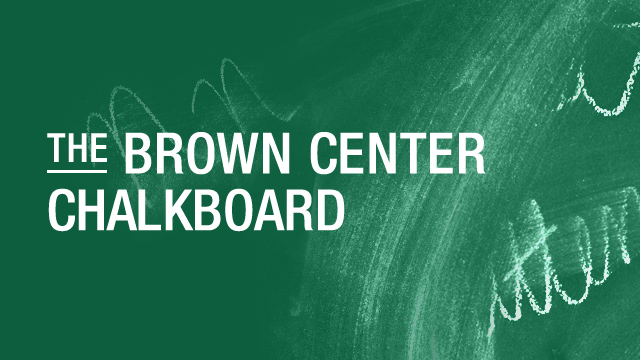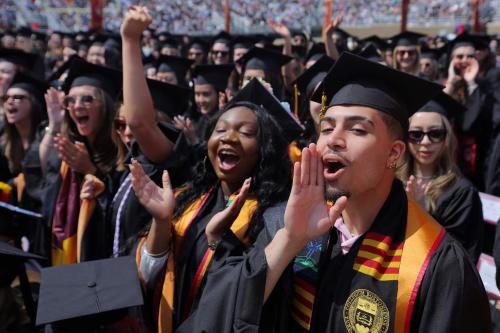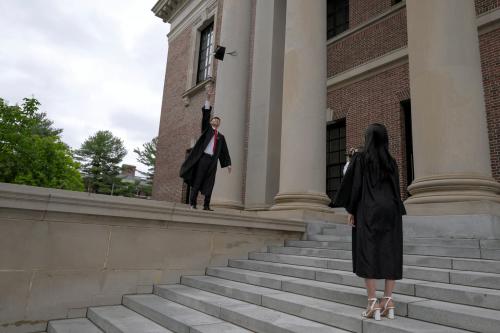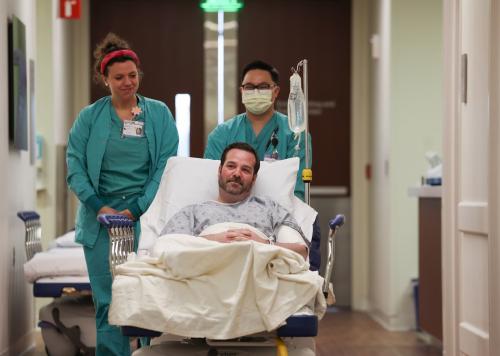Higher education is an important driver of social mobility. A large body of research has studied the economic returns to various postsecondary investments, generally concluding that attending well-resourced colleges is beneficial for students’ degree completion and earnings, especially for low-income students.
Yet, most of this literature focuses solely on a students’ first or last college, thereby failing to characterize a large segment of the college-going population: students who transfer between institutions.
In the United States, transfer students make up over a third of all college students. There are many reasons why transfer may be an appealing pathway for students, especially those who begin their education at a community college. Though community colleges typically receive fewer resources than four-year colleges, they are also more affordable to students, especially with the rise of place-based “promise” programs offering free community college. Community colleges are also more geographically accessible, which has important implications for equity gaps. Underrepresented minority and low-socioeconomic status students are more sensitive to college distance, such that living closer to a community college can increase their overall enrollment and degree completion. Because disadvantaged students are disproportionately likely to begin their postsecondary education at a community college, their most accessible pathway to a well-resourced four-year college may be through transfer.
Some prior research has examined transfer students’ experiences and outcomes, and results to date are mixed. Transfer students face significant challenges in meeting the academic demands of their new institution, forming social ties, and navigating complex institutional transfer processes and policies. However, state policies that create clear transfer pathways and admissions standards for transfer-intending community college students offer promise by increasing transfer rates and bachelor’s degree completion, including at selective four-year universities. However, little previous work has studied the labor market consequences of transfer pathways and policies.
New study on transfer students shows positive effects on degree completion, but negative effects on earnings
In a new study, I estimate the returns to transfer for community college students in Texas. I focus on community college students who apply to transfer to a four-year public college in Texas between 2000 and 2019. Using statewide administrative data, I track these students’ enrollment, transfer, and degree completion at any Texas two-year or four-year college, along with their earnings for up to 24 years after transfer. Texas’ transfer prevalence and outcomes are similar to the national average: 35% of Texas community college students transfer to a four-year college (compared to 33% nationally), and 54% of those who transfer complete a bachelor’s degree (compared to 52% nationally).
This study uses a regression discontinuity design to produce causal estimates of the effect of transferring from community college to a four-year college. I use transfer applications and admissions data from all four-year public universities in the state to identify GPA cutoffs used in transfer admissions (e.g., minimum required GPA for admission of 2.0, guaranteed admission with 2.5 GPA, etc.). I then compare the later college-going and earnings outcomes of students whose GPAs were just above the transfer cutoffs to those who applied but were denied admission because their GPAs were just below them.
My results show that among two-year college students who apply to transfer to four-year colleges, those who are narrowly accepted for transfer admission were more likely to earn a bachelor’s degree than those narrowly denied admission. Many students who are initially narrowly denied admission end up applying again and later transferring, with 47% of them earning a bachelor’s degree within six years of their initial transfer application. Barely accepted transfer students are 18 percentage points more likely to earn a bachelor’s degree on top of this baseline, bringing their overall degree completion rate to 65%.
However, I surprisingly find that barely admitted transfer students had lower earnings than students who were barely denied admission. This initial transfer caused students to earn around $7,000 less annually (a decrease of 14% relative to a baseline mean earnings of approximately $50,000). The negative effects persisted for 10 or more years after the initial transfer decision. These negative effects may be exacerbated if students took on debt to attend the four-year colleges.
Exploring these counterintuitive results
Some important context for understanding my results is that the transfer admission GPA cutoffs that I use to produce these estimates are relatively low (1.9 on average). Because I am only able to estimate effects for students just above and below these cutoffs, those in my sample will not be representative of all transfer students. In particular, the low GPAs of students in my sample may indicate that they are academically underprepared when they initially applied for transfer. Additionally, the confidence intervals are wide, and statistical significance varies across specifications, so while I am confident that earnings effects are not positive, the magnitude of negative effects may be less than $7,000.
But caveats aside, the positive effects on degree completion seem at odds with the negative effects on earnings and warrant further review. I consider several potential explanations.
First, I look at differences between the treatment (transfer applicants with GPAs just above the cutoff) and control (transfer applicants with GPAs just below the cutoff) groups. Differences in the timing of labor market entry or chosen fields of study might impact earnings independent of degree attainment. Yet, neither of these reasons explained the surprising findings.
Next, I consider who is being included in the control group. Those narrowly rejected on their initial transfer application include some students who eventually transferred at a later point despite the initial rejection (approximately 50%) and others who never transferred. This means that effects may be capturing not just the effect of transferring relative to never transferring, but also the timing of transfer. I suspected these two different subgroups could have divergent outcomes, where a positive effect of any transfer was being masked by a large negative effect of transfer timing. While the regression discontinuity design does not allow me to disentangle the earnings effects for these two groups, supplemental analysis on these groups using a different research design finds negative effects even when only comparing the initial transfer students to those who never transfer to a four-year college. Thus, control group composition can’t fully explain these results.
Regarding transfer timing, prior research on the relationship between community college transfer and earnings concludes that those who transfer after completing an associate’s degree earn more, on average, than those who transferred without a degree. Interestingly, I also find a corroborating pattern where the negative earnings effects were concentrated among those that transferred earlier (i.e., with fewer credits) rather than later in their college career.
Finally, I find differences in labor market participation, too. Although students in the treatment group were not more likely to completely exit the labor force, they (and especially the men) were more likely to have short periods without employment in between jobs. Surprisingly, these frequent switches between employment and non-employment persisted for more than 10 years after the initial transfer application. These gaps in employment compound over time so that transfer students have fewer years of experience in the medium to long run. Many more results, including the effects of transferring from a four-year college to a four-year flagship college, can be found in the paper.
Implications for policy and practice
My findings have policy implications in several areas. First, higher education institutions may want to consider making changes to their transfer admissions and processes, either by raising transfer admission GPA cutoffs at four-year colleges or improving the alignment of academic requirements and expectations between community colleges and four-year universities. This includes improving articulation agreements to smooth the acceptance of community college credits at four-year institutions and early communication with transfer-intending students to ensure they are aware of which classes will transfer to count toward a bachelor’s degree.
Second, four-year institutions may want to increase their support for transfer students to ease their transition and promote students’ formation of academic, professional, and social networks. For example, randomized control trials of comprehensive support interventions, which have proven to be effective in raising community college students’ degree completion and earnings, could be extended to transfer students at four-year universities. Prior qualitative research shows that community college transfer students have trouble forming strong relationships with other students and faculty at four-year institutions, and programs that help transfer students integrate into the university community could strengthen social connections that are often vital to students’ early career successes.
More broadly, states and institutions may want to think about policies that reduce the need for community college students to transfer in the first place, which would reduce disruptions to students’ education, lives, and social networks. While around 80% of community college students intend to transfer and earn a bachelor’s degree, only around one third transfer to a four-year college and only 16% earn a bachelor’s degree. Reducing the need for transfer could be accomplished by broadening access to four-year colleges so that more students can enroll there initially, or by offering bachelor’s degrees at community colleges. Currently, 24 states allow community colleges to confer bachelor’s degrees, and their prevalence has been rapidly growing: I estimate that from 2004 to 2022, the share of community colleges offering bachelor’s degrees rose from 2.1% to 16.5%, and the total number of degrees awarded grew from 3,327 to 16,059.
Clearly, many students are not being well served by the existing transfer systems, and future research is needed to determine which policy tools would be the most effective in helping students succeed.
The Brookings Institution is committed to quality, independence, and impact.
We are supported by a diverse array of funders. In line with our values and policies, each Brookings publication represents the sole views of its author(s).








